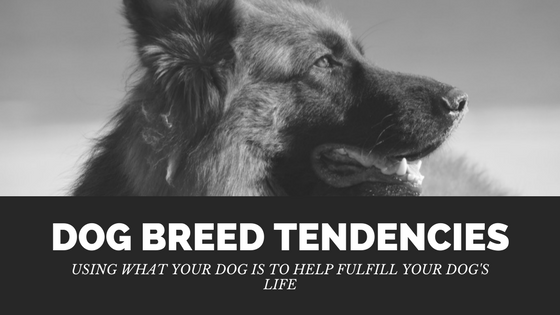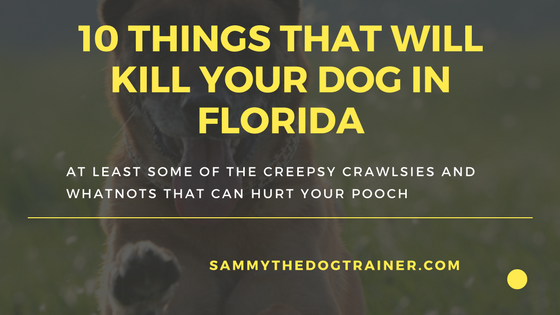Breed Tendencies
Dog Breed Characteristics
Using What Your Dog Is to Help Fulfill Your Dog's Life
The age old Nature versus Nurture debate is especially poignant in the dog arena. Is a dog a product of its breeding or of its upbringing? From my experience it is a bit of both, which can be a wildly unpopular opinion depending on how vehement you are and on what side of the debate you fall. Before you get all riled up and start sending me death threats, listen to what I have to say. This post is about training your dog, not fixing aggressive behavior, which is what everyone assumes when you start talking about Nature versus Nurture in dogs. Whether or not aggressive behavior is a product of Nature or Nurture is an entirely separate post, which I will tackle eventually. Now back to the subject at hand.
Every dog has its own, unique personality. That is why my dog training methods center on tailoring your methods to your dog. No two dogs are exactly the same. Even within a dog breed, not all the dogs are going to display the same characteristics. Just like people, dogs are unique, sentient beings. Parker and Gilbert (2015) notes that as dogs have been our companions for between 14,000 and 30,000 years, having shared life and everything it entails with us, have also manifested some of the same medical illnesses as we do. Dogs are one of the most diverse species on the planet, from the Teacup Pomeranian to the Tibetan Mastiff. Genetically, certain homogeneous phenotype strains within domestic dog are responsible for displaying the characteristics we call breeds. It has just been since the Victorian era that the vast array of specific dog breeds has emerged and become standardized (Alderton, 2002; American Kennel Club, 1998; Parker, 2012). Previous to the Victorian era, dog competitions centered around abilities rather than conformation. As the idea of breed clubs boomed, so did the breeding industry, and thus we have the variety of breeds we have today.
With breed specificity, functionality did not (mostly) die out. Albeit many dog enthusiasts will bemoan what conformation showing has done to their breeds' sporting capabilities. Are there Labrador retrievers that have no interest in retrieving anything? Yes, but not many. Are there Border Collies with no herding instincts? I have not met one yet. Are there Rat Terriers who would be best friends with a mouse? Maybe, but more than likely they will instinctively want to murder said mouse rather than cuddle said mouse. So use that to your advantage. Research your dog's breed(s) and find out what drives those breeds. Do a little experimenting with this information and see if maybe you can find a sport your dog will enjoy.
My dog is German Shepherd Dog (GSD). While originally they were bred for pastoral purposes (and some GSDs still retain some herding instincts) they have been used in protection and police capacities for a couple hundred years. Are all GSDs overprotective? No, but some can be without proper guidance. I used my dog's protection instincts and started doing Schutzhund club with him. He has some protective instincts, but there are other dogs at the club that have them more so. Those dogs live and breath for the sport, and it is great that their owners took the time to shape them in a healthy way. I love to see my Border Collie clients take up amateur sheep herding- their owners get to see their instincts come alive! If you do not have any sheep available, try teaching your dog grouping games. I teach them to "Make a Group" with specific toys and to put toys in the group by name, and then move where I want the collie to put the group. This game fulfills their obsessive compulsive tendencies and makes your house neater! If you have a Husky, a Malamute, or any of the Pitbull type breeds, check out competitive pulling. You know that really annoying tendency for them to drag you down the street on walks? Give it a context. Oh, and then call a trainer to help show your dog how to differentiate between dragging mom on walks and dragging the sleigh at club. Loads of dogs love agility including mine, not just the agile Aussies you see flying about the courses on TV. If you are stumped as to what might peak your dog's interest, give it a try. You will need to have basic obedience skills and a good control of your dog off leash first before enrolling in agility classes. If you have a dog that was bred to hunt vermin, check out Barn Hunting. This is a sport where a rat safely enclosed in a PVC tube and hidden in a barn. The dogs are timed in finding the rat. Sonlight Ranch and K-9 Events Center is one place that hosts loads of fun doggy events in the Tampa, Florida Area and they do Barn Hunting: Sonlight Ranch and K-9 Events Center Facebook Page Link
After careful research, you have found that your dog is....a lap dog. What breed tendencies does a lap dog have? Well...they like to be in your lap. My older brother calls them "sleeve dogs" because Pekineses were bred to sit inside the sleeves of Chinese empresses (my older brother is a rocket scientist but he does not always have the most tact. His blog on all things science is listed on my blog links too. If you want to check it out it is amssolarempire.com). I think companion dog is probably a nicer way to say sleeve dog . It means they crave being with you. That's great too! You did get them, after all, to keep you company.
You ask: Sammy, every Husky I have owned loves to escape my yard like Houdini....is there a sport for that?
Um....that is one of those breed characteristics that you might have to train out of them. Huskies do love to run. Maybe attach a sled to them? And build a taller fence?
Finding what your dog loves to do is just one more step in a rich life with your dog.
What if you really wanted a top dock-diver, but your dog hates the water? Hit the drawing board and see what else your dog might like. Just like our human children, they might not all be exactly what we envisioned, but we love them all the same.
Cheers,
Sammy the Dog Trainer
References
Alderton D (2002) Dogs. Dorling Kindersley, Ltd., New York
American Kennel Club (1998) The complete dog book, 19th edn. Howell Book House, New York
Parker, H.G., & Gilbert, S. (2015). From caveman companion to medical innovator: Genomic insights into the origin and evolution of domestic dogs. Advances in Genomics and Genetics, 2015, 239-255. doi:10.2147/AGG.S57678
Parker, H. G. (2012). Genomic analyses of modern dog breeds. Mammalian Genome, 23(1), 19-27. doi:10.1007/s00335-011-9387-6









Question here seems to boil down to a laisez-faire, " let the buyer beware " business model vs
ReplyDeletea , seemingly, minimally regulated affair. Understandably where a license is required, a cost is incurred and presumably passed onto the client. Background check ? A nuisance yes.but relying
only upon word of mouth,first impressions etc. could be iffy..I can see where a modicrum of a check could be benefiical for both client and provider. Do trainers want anyone to be able to "hang out a plank"?
Liability insurance protects both trainer and client. In this tort oriented society people are sued or sue over anything. Insurance displays some measure of accountability, protecting policyholder as
well. A voting board of elected representatives,if hearings are open and fair, are entrusted to act in the interest of all citizens.